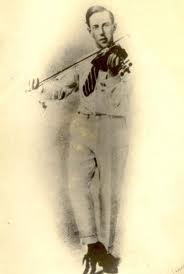Annotation:Lord Gordon's Reel
X:1 T:Lord Gordon's Reel M:C| L:1/8 R:Reel S:O'Neill - Dance Music of Ireland: 1001 Gems (1907), No. 670 Z:AK/Fiddler's Companion K:D dB|AD (3FED AD (3FED|ADFD A2 GF|EFGA BE {F}(3EDE|defd B2 AB| defd efdB|AFDF A2 Bc|dBcA BGAF|EFGA B2|| de|d>f {e}(3dcd fgag|fddf a2 gf|efga beef|defd B2 AB| defd efdB|AFDF A2 Bc|dBcA BGAF|EFGA B2||
LORD GORDON'S REEL ("Tiarna Gordon (An)" or "Cor an Tigearna Gorduin"). AKA and see "Bride of Kildare (The)," "Duke of Gordon's Rant (The)," "Duke Gordon," "Duke of Gordon's Favourite (2) (The)," "My Heart with Love is Breaking," "Pride of Kildare (3)," "Rakes of Drumlish (The)," "Rocks of Antiluce (The)," "Scotch Rose (The)," "Scotch Patriot's Reel (The)," "Taste of Gaelic (A)," "Waterloo Reel (5)." Irish, Reel. D Major. Standard tuning (fiddle). AB (Breathnach vol. II, O'Neill/1850 & 1001, Roche): AABB (Allan's): ABCDE (Breathnach, vol. 1): ABBCCDDEE (Flaherty): AABBCCDDEE (Cranitch): AA'BB'CC'DD'E (Miller): AA'BBCC'DEE' (O'Neill {Krassen}): AABBCCDD'EEAA (Brody). Breathnach (1963) states this reel was composed by the Scots composer and musician William Marshall (1748-1833). However, Breathnach did not cite the source for this information and the tune and title apparently are not in Marshall's published works. The melody is called "Duke of Gordon's Rant (The)" in McGlashan's Collection of Strathspey Reels, c. 1780, which Breathnach (1976), writing later, admitted was the first printing of the melody.

"Lord Gordon" was popularized by fiddler Michael Coleman (1891-1945), originally from Killavil, near Ballymote, County Sligo, who recorded a masterful five-part version in New York in 1934[1], although the tune was "never part of the local ...repertoire," according to Blooming Meadows (1998) authors Charlie Piggott and Fintan Vallely. Despite this, Coleman's virtuoso performance of the reel is one that is widely admired and aspired to by many fiddlers. Other Irish fiddlers recorded the tune in the 78 RPM era, however, including uilleann piper Pat Brophy (originally from Roscrea, Co. Tipperary), Michael Carney, fiddler Michael Hanafin (County Kerry), and the Ballinakill Traditional Dance Players (County Galway). Most of these recordings were of a two-strain tune (akin to its original Scottish version), although piper Seamus Ennis played a three part setting he called "Duke Gordon.
The melody has numerous other variants, some distanced enough to be considered separate tunes. "Pride of Kildare (3)" is a related tune, and was, according to Brendan Breathnach, the name by which peripatetic Sliabh Luachra fiddler Pádraig O’Keeffe called “Lord Gordon.” "Pride of Kildare (3)" appears in Ryan's Mammoth Collection (1883) as "Bride of Kildare (The)" a change that researcher Conor Ward believes was created by Alex Sutherland (1873-1967), a fiddle player from Drumreilly, Co Leitrim. The tune appears in his c. 1950 ms. collection as "Pride of Kildare." Cape Breton fiddlers play their own version as "Scotch Patriot's Reel (The)" (adopted from the Ryan/Cole's collection), or, as Buddy MacMaster called it, "Taste of Gaelic (A)." Alan Jabbour finds a version printed in America by George P. Knauff as "Scott's Favorite" in Virginia Reels, volume III (Baltimore, 1839). French-Canadian fiddler Joseph Allard's "Mrs. Renault's Reel/Madame Renaud" is a related tune.
- ↑ Coleman was ably accompanied on the recording by a tenor guitar played named Michael "Whitey" Andrews. According to his son, Michael Jr., his nickname came from the fact that he was an albino, with pink eyes and very poor eyesight. He could not read music, but was blessed with perfect pitch and a prodigious musical memory that allowed him to retain music that he heard.

